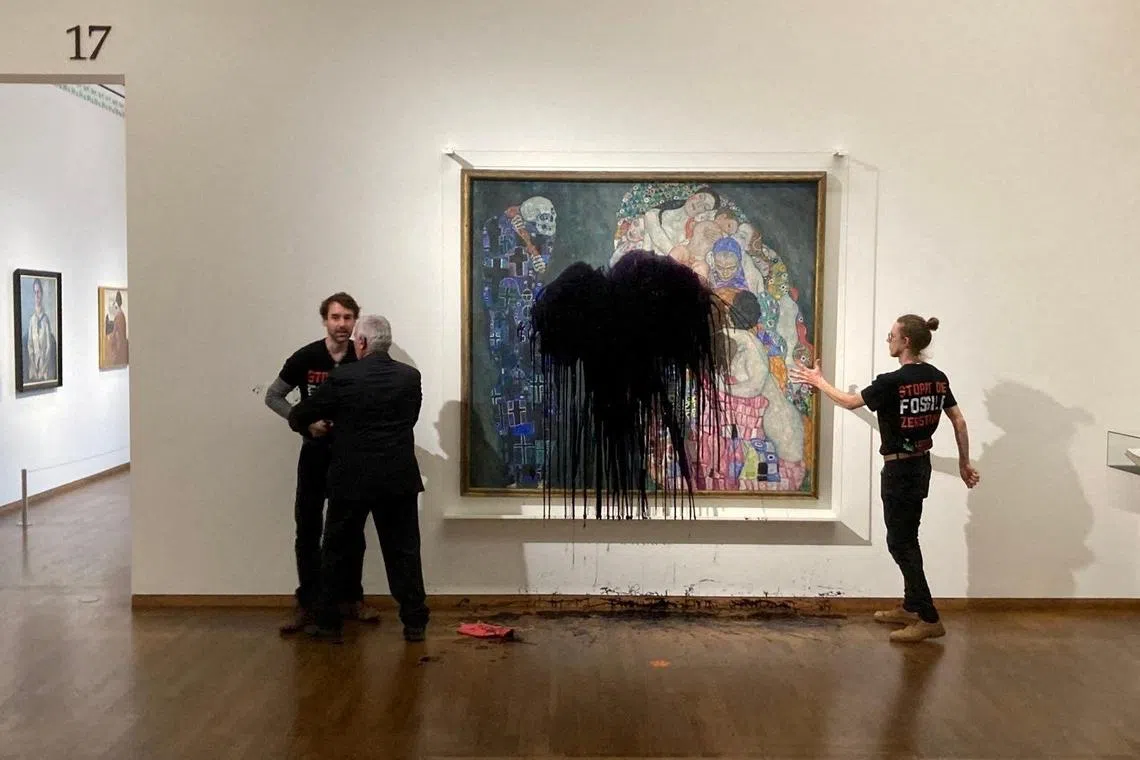How do you tell a vandal from a visitor? Art museums are struggling
Sign up now: Get ST's newsletters delivered to your inbox

Activists threw black liquid at one of Gustav Klimt's major works, Death And Life, at Vienna's Leopold museum earlier in November.
PHOTO: REUTERS
Follow topic:
LONDON – For Mr Hans-Peter Wipplinger, director of Vienna’s Leopold Museum, the past few weeks have been challenging.
As climate protesters across Europe stepped up their attacks against art, Mr Wipplinger took measures to protect his storied collection, which includes famous paintings by Gustav Klimt and Egon Schiele. Bags and coats were banned, and the museum hired extra guards to patrol its five floors.
It did not work. In mid-November, members of a group called Last Generation walked into the museum and threw black liquid at one of Klimt’s major works, Death And Life.
The Klimt, protected by glass, was unharmed. But Mr Wipplinger said his security team could have stopped the attack only by subjecting visitors to invasive body searches, “like at the airport”. He did not want to even consider that prospect, he added.
With the attacks showing no sign of abating, museum directors across Europe are settling into a nervous new equilibrium, fearful for the works in their care but unwilling to compromise on making visitors feel welcome. Nothing has been permanently damaged, but many fear that an accident or an escalation in the protesters’ tactics could result in a masterpiece being destroyed.
The actions, which began in Britain in June, are increasing in frequency and daring. At first, protesters glued themselves to the frames of famous paintings, but since footage of activists splattering Vincent van Gogh’s Sunflowers with tomato soup
Those works were protected by glass, and the protesters’ projectiles never touched an artist’s brushstroke. Yet, last Friday, protesters in Paris poured orange paint directly onto a silver Charles Ray sculpture outside the Bourse de Commerce contemporary art space. A Bourse de Commerce spokesman said the sculpture was cleaned within a few hours.

Orange paint was poured on a silver Charles Ray sculpture outside the Bourse de Commerce contemporary art space last Friday.
PHOTO: REUTERS
In a statement in November signed by the leaders of more than 90 of the world’s largest art institutions, museum administrators said they were deeply shaken by the protesters’ “risky endangerment” of artworks.
Yet, few museums appear to have taken bold steps to protect their collections. Norway’s National Museum and the Barberini Museum in Potsdam, Germany, have banned visitors from taking bags or jackets into their exhibition halls. Others have made no changes. NYTIMES

